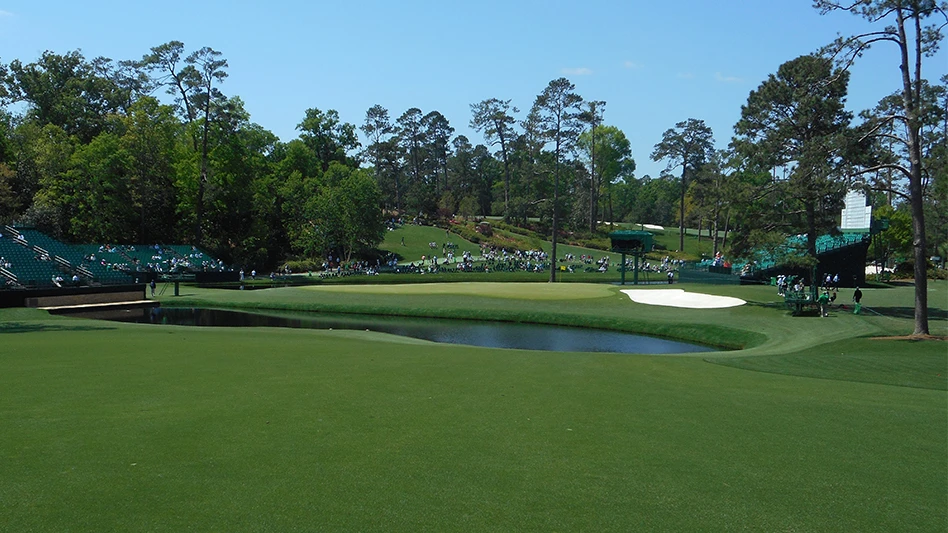Recently, I had the opportunity to participate as a panelist at an industry symposium on affordable golf, coordinated by golf course architect Richard Mandell, to openly discuss a broad range of topics and maintenance considerations related to the cost of golf.
An alumnus of the University of Georgia, Mandell (who hails from Rye, N.Y.) has worked with Dan Maples, Denis Griffith and, since 1999, has practiced solo, now based out of Pinehurst, N.C.
The basic premise of the discussions was: “What is affordable golf and does it truly exist?” Each topic for the day had one commonality – golf can be affordable by examining the many ideas already implemented within the industry.
The audience and panelist consensus was that affordable golf is a subjective term and that the perception of affordable may be even more subjective. Affordable golf means different things to different people. Sustainable and profitable are terms that need to go hand-in-hand with affordable golf.
According to Mandell’s post-symposium recap, an enjoyable and memorable playing experience for golfers is attainable. However, there are perceptions that negate the concept of affordability including:
• The game’s perceived reputation as a sport of the rich.
• The differences between the top golfers in the world and the rest of us. We must all stop acting like there is not a difference.
• Golf course set-up for the professional can’t be the same as for average golfers (we are not Phil Mickelson).
• What is seen on television cannot be achieved at most golf facilities.
Ran Morrissett, panelist and founder of golfclubtatlas.com, pointed his finger at the influence of television promoting an unsustainable atmosphere desired by facilities that have neither the financial ability nor the clientele to warrant such an effort.
• The fallacy that being environmentally-sustainable is too expensive.
• In recent years a lack of honesty or integrity regarding “real costs” has disguised the true state of the industry.
• Golf course rankings are a better marketing tool than the golf experience itself.
The symposium also uncovered problems and threats to the future of the game, including the observation that construction and maintenance technology continues to raise the bar instead of making golf more affordable and the myth that cutting golf course maintenance budgets is the answer to saving money.
From a maintenance perspective, I advocate the following:
• Build on a piece of land that is right for the economics of the region.
• Moderate green speeds and prepare your course for your clientele. The average golfer fails to realize why excessive speeds and golf course difficulty are detrimental to their game.
• Eliminate the frills and extravagances that increase expenses and require more people and equipment to achieve aesthetic perfection.
• Stop mixing turf varieties and grassing philosophies.
• Reduce the various heights-of-cut throughout the golf course.
• Manage tournament expectations for the golf course (minimize the perfection standard and allow a blemish every once in a while).
• Focus on strategy and playability over aesthetics. Strategy always keeps a golfer’s interest and allows for playability across all levels.
By adhering to these philosophies, the need for renovation and reconstruction should be reduced. Course length is not the answer to affordability.
While there is certainly nothing wrong with Augusta National and The Masters, the Augusta syndrome should not be copied if the end goal is “affordable” golf. What we need to do, as golf course superintendents and the industry, is to minimize perfection and accept blemishes. Most golfers don’t see what we see.
The golf industry, in its pursuit of technology in construction and maintenance, automatically sets the standard at a higher a level. Examples may be seen in putting green and bunker construction, as well as in irrigation design.
Affordable golf also pertains to the audience of families. Keep families and higher handicap players in mind as you consider what can be done at your course to make the game more affordable for a variety of audiences through each day and year.
Focus on growing the game and the profit will follow.
The 2011 symposium on affordable golf will take place at Southern Pines Golf Club in Southern Pines, N.C. on Nov. 7-8, 2011. GCI
For additional information, go to www.symposiumonaffordablegolf.com.

Explore the February 2011 Issue
Check out more from this issue and find your next story to read.
Latest from Golf Course Industry
- Smart Greens Episode 1: Welcome to the digital agronomy era
- PBI-Gordon promotes Jeff Marvin
- USGA investing $1 million into Western Pennsylvania public golf
- KemperSports taps new strategy EVP
- Audubon International marks Earth Day in growth mode
- Editor’s notebook: Do your part
- Greens with Envy 66: A Southern spring road trip
- GCSAA’s Rounds 4 Research auction begins





